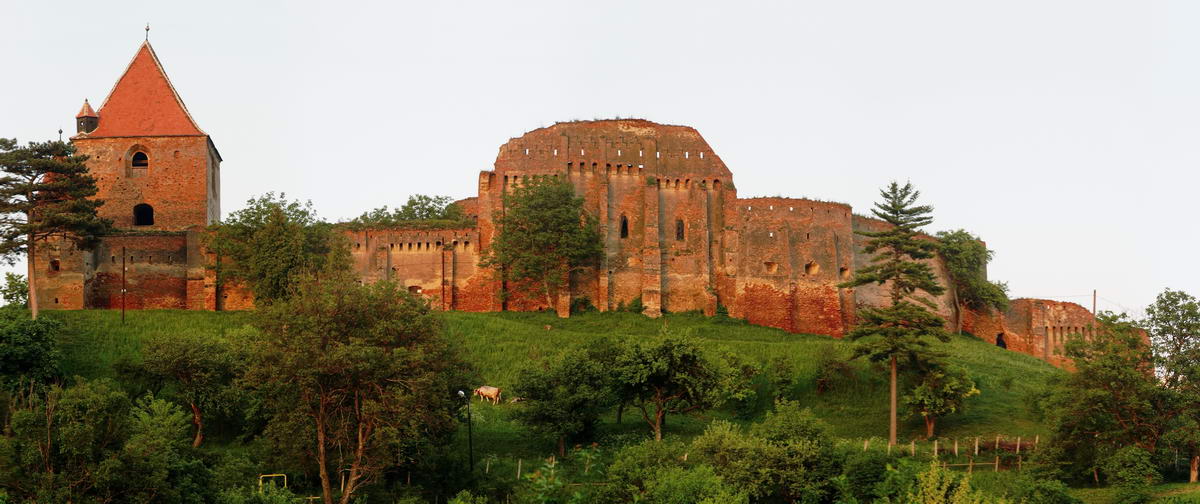
The church’s architecture displays numerous characteristics of the Romanesque basilicas in the Sibiu area: a compact central nave, Gothic ribbed cross vaults at the side aisles, arcades with round arches resting on square pillars and arched windows at the clerestory, all dating back to the 13th century, same as the apsidal of the southern side aisle. The chancel was modified during the 15th century, when the pointed windows, the rib vault and a defence level were added. The defence wall was built in the same time and still features a small chapel on the eastern side. The penetrated barrel vault on transverse arches in the central nave was built in the 18th century. The interior preserves the 18th/19th century pew and the paintings, which were restored in 1988.
 Place and surroundings
Place and surroundings
Nowadays a district of Sibiu, Guşteriţa is one of the oldest Transylvanian Saxon settlements in the area and still preserves its original typical rural structure. Its proximity to the city brought it multiple economic benefits indeed, but at the same time transformed it in a target for enemies. The place has been ravaged so many times, that its resistance can only be regarded with admiration. In 1600 it was burned to the ground by the troops of commander Basta, in 1658 it was severely deteriorated by the Turks, in 1661 it was ravaged by the troops of Ali Pasha, devastated by fire in 1690 and 1698, pillaged by the Kurucs in 1701 and even visited by the plague.
Despite all, Guşteriţa developed as one of the most important suppliers of bricks and tiles for the buildings of the neighboring Sibiu. The village has been mentioned in the chronicles already in 1500 for its export of clay. Some centuries later modern factories have been developed, part of which are still functioning today.
Activities
Within the fortified church ensemble the parish Sibiu has established a so-called „green fortified church project“.
Contact:
Ev.Parish Sibiu
Tel.:+40/269/212 600





